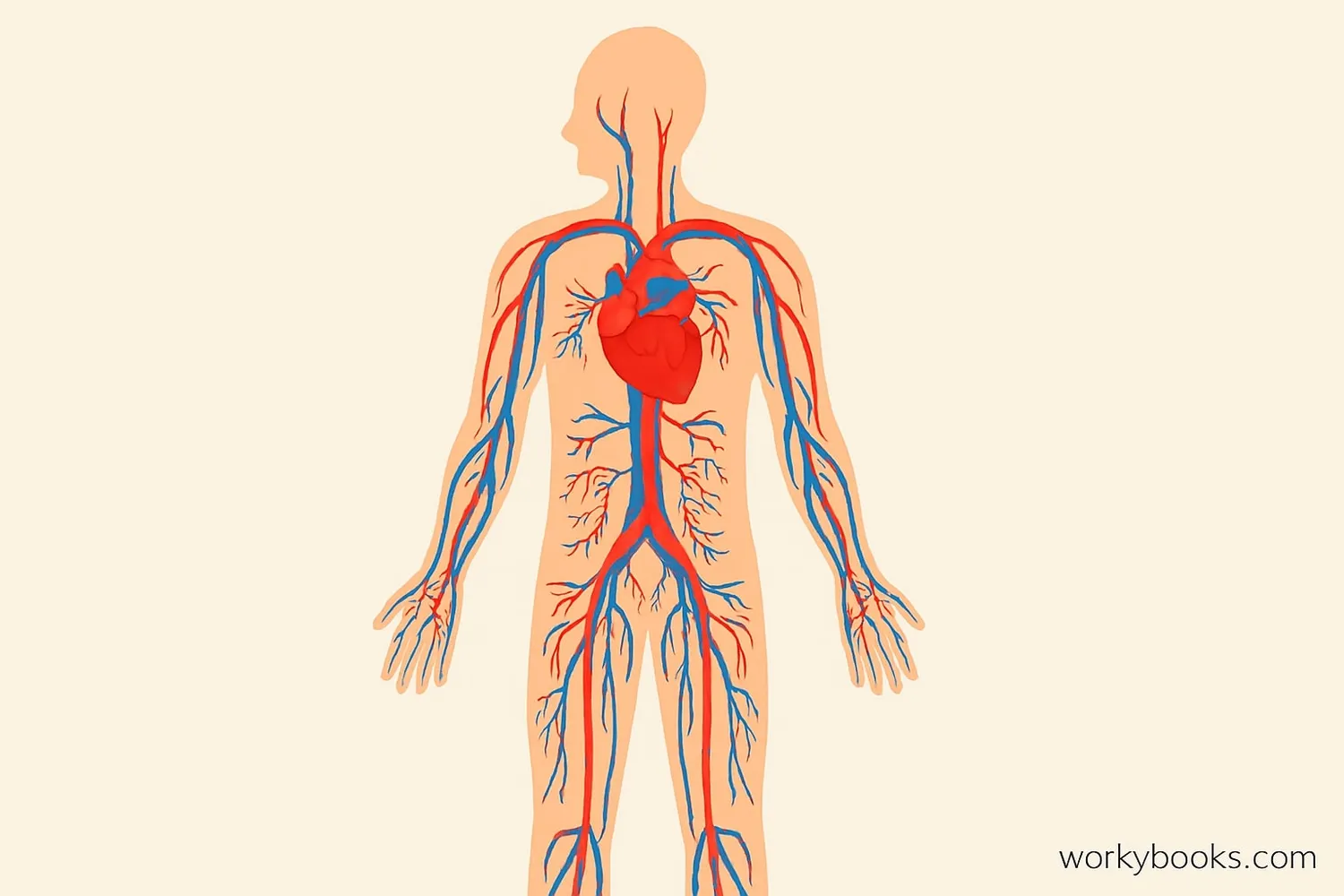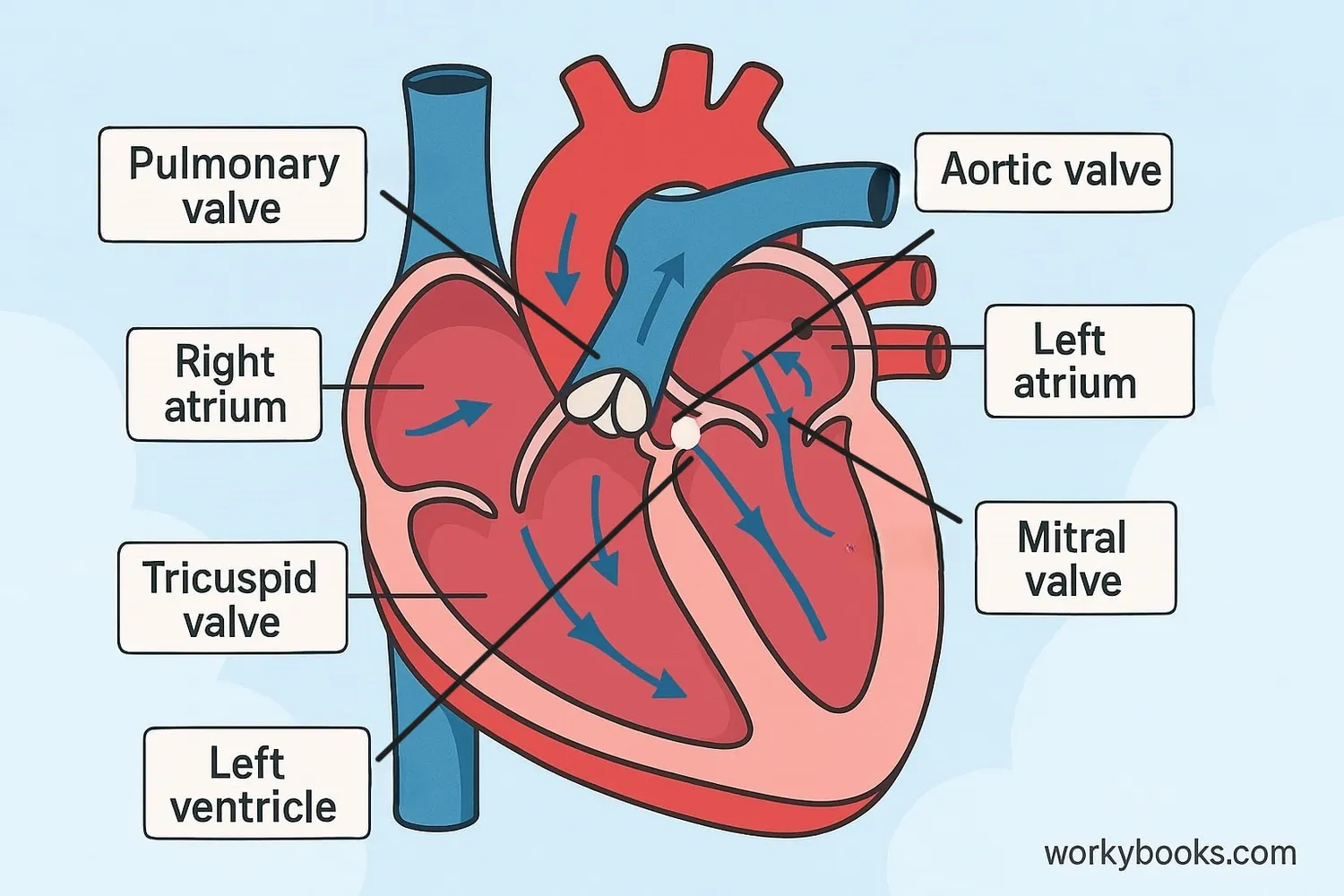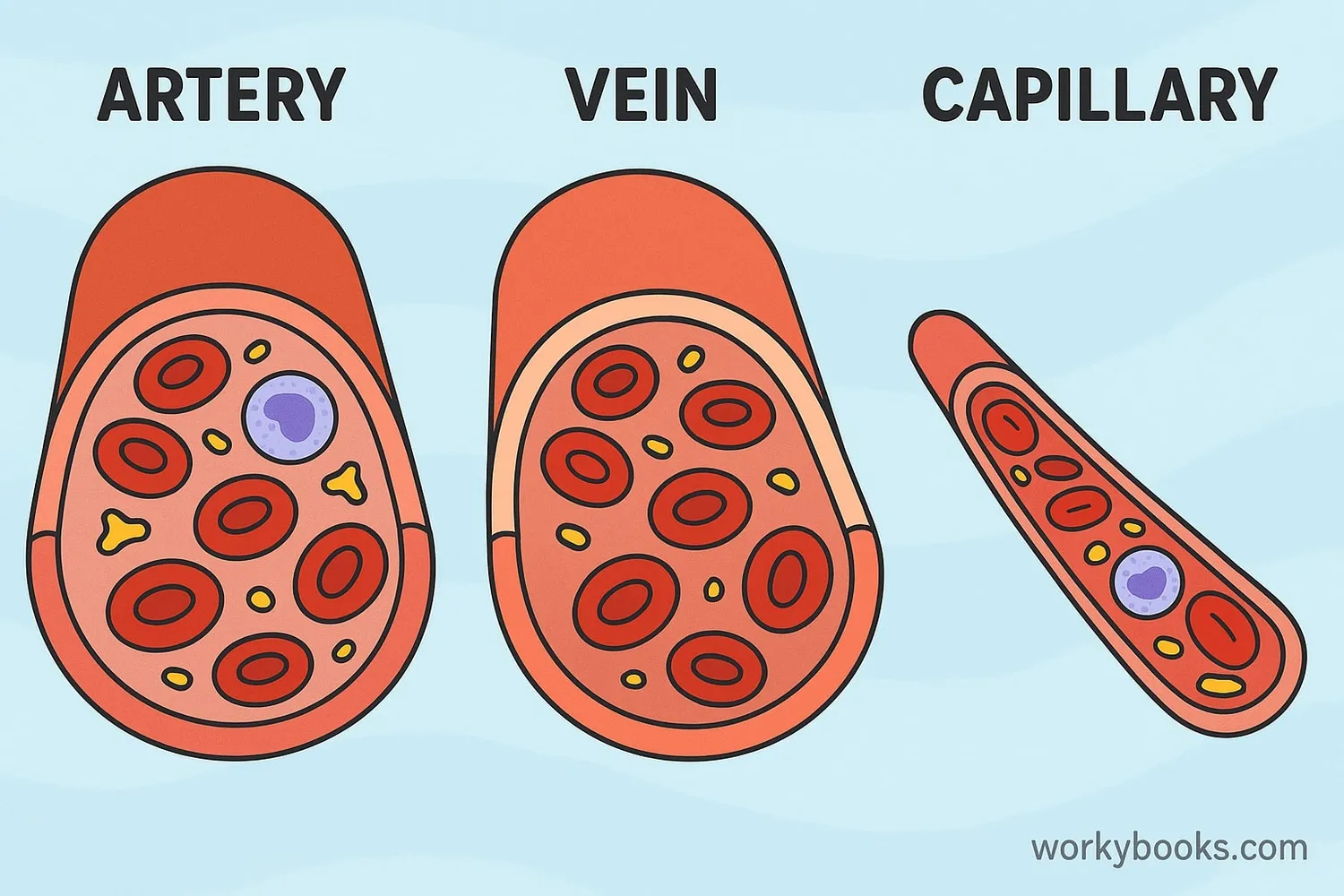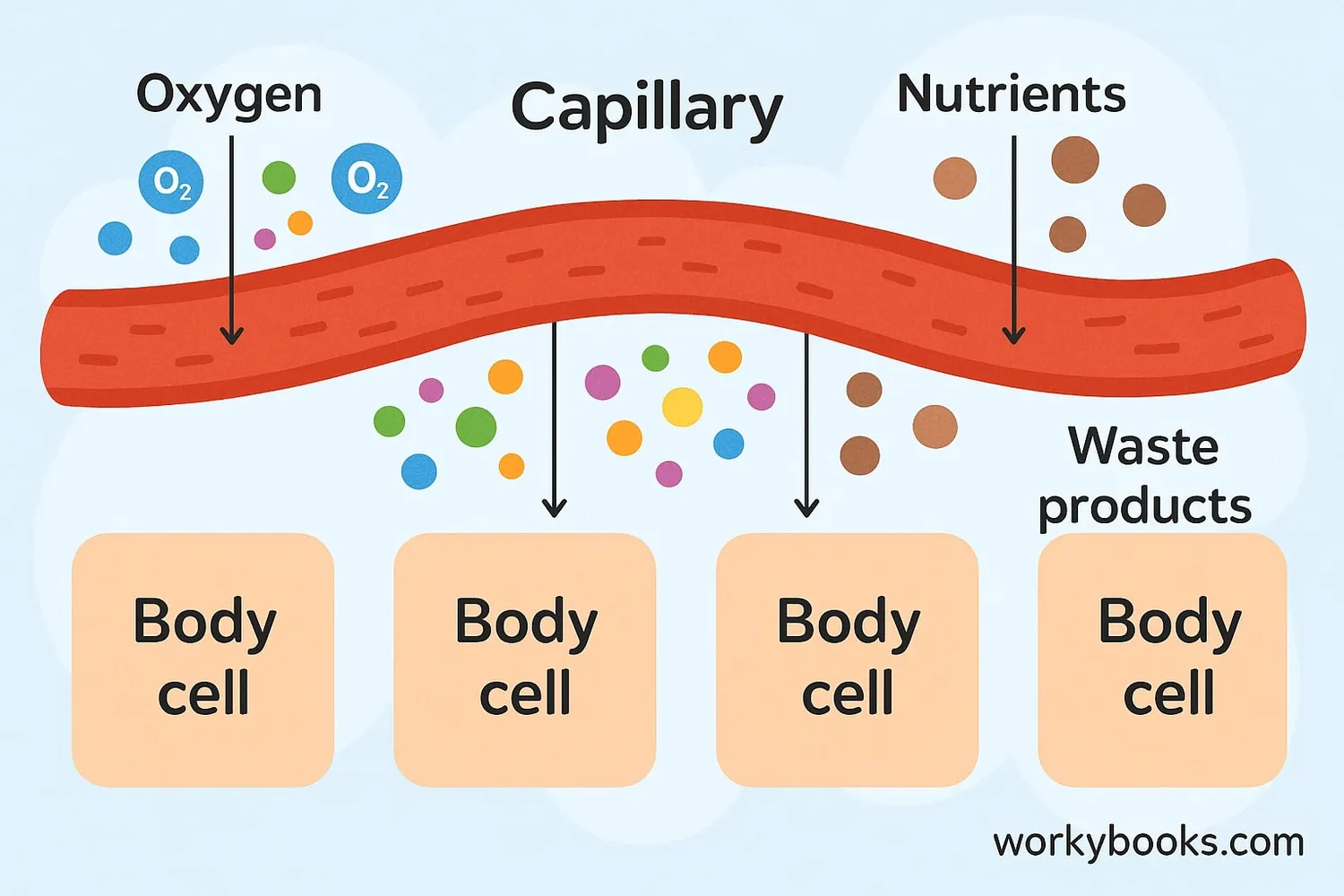Circulatory System - Definition, Examples, Quiz, FAQ, Trivia
Discover how your heart pumps life through your body every second!
What is the Circulatory System?

The circulatory system is your body's amazing delivery system! It's made up of your heart, blood vessels, and blood. Together, they transport oxygen, nutrients, and other important substances throughout your body.
Think of your circulatory system as a network of roads, with your heart as the central hub. Blood travels through blood vessels just like cars travel on highways, delivering essential supplies to every part of your body. Without this system, your cells couldn't get the oxygen and nutrients they need to function!
Fun Fact!
If you laid out all your blood vessels end to end, they would stretch over 60,000 miles - that's long enough to circle the Earth twice!
How the Heart Works

Your heart is an incredible muscle that works like a pump! It has four chambers: two atria on top and two ventricles on the bottom. Here's how blood moves through your heart:
Blood Enters Heart
Deoxygenated blood enters the right atrium
To Lungs
Blood pumps to lungs to get oxygen
Back to Heart
Oxygen-rich blood returns to left atrium
Out to Body
Left ventricle pumps blood throughout body
This amazing process happens about 100,000 times every day! That means your heart beats about 3 billion times in an average lifetime. The sound you hear as a "heartbeat" is actually the valves in your heart opening and closing to keep blood flowing in the right direction.
Heart Power!
Your heart pumps about 2,000 gallons of blood every day - enough to fill a small swimming pool!
Blood Vessels and Blood

Your blood travels through three types of blood vessels:
Arteries
Carry oxygen-rich blood away from heart (thick walls)
Veins
Bring oxygen-poor blood back to heart (have valves)
Capillaries
Tiny vessels where oxygen/nutrient exchange happens
Your blood is made of several important components:
Red blood cells: Carry oxygen throughout your body (give blood its red color)
White blood cells: Fight infections and keep you healthy
Platelets: Help your blood clot when you get a cut
Plasma: The liquid part that carries cells and nutrients
Why the Circulatory System is Important

Your circulatory system is essential for life! Here's why:
Oxygen Delivery
Brings oxygen from lungs to all body cells
Nutrient Transport
Delivers nutrients from food to cells
Waste Removal
Takes away carbon dioxide and other wastes
Without your circulatory system, your body couldn't:
• Get oxygen to your muscles for movement
• Deliver nutrients to your brain for thinking
• Remove waste products from your cells
• Fight infections throughout your body
• Regulate your body temperature
That's why keeping your heart and blood vessels healthy with exercise and good nutrition is so important!
Circulatory System Quiz
Test your knowledge with this circulatory system quiz! Answer all 5 questions to see how much you've learned.
Frequently Asked Questions
Here are answers to common questions about the circulatory system:
Fun Circulatory System Trivia
Discover some amazing facts about your heart and blood!
Heart Power
The heart creates enough pressure to squirt blood 30 feet! That's why doctors can feel your pulse by just touching your skin.
Blood Cell Factory
Your bone marrow produces about 2.5 million new red blood cells every second! That's 200 billion new cells every day.
Animal Hearts
The blue whale has the largest heart - weighing about 400 pounds! A hummingbird's heart beats up to 1,200 times per minute during flight.
Space Effects
In space, without gravity, astronauts' hearts become more spherical! Scientists study this to understand heart health on Earth.


